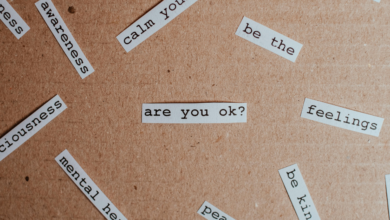Bipolar Disorder: How Lithium as a Treatment Fell Out of Favor

Bipolar disorder is a mental health condition distinguished by extreme mood swings ranging from deranged highs to depressive lows. Has been one of the most challenging conditions to treat within psychiatry. Over the years, different pharmacological treatments have been introduced to stabilize mood and manage symptoms, but among them. Lithium has historically been one of the most prominent and effective treatments. However, despite its success in stabilizing mood and controlling both manic and depressive episodes, lithium has slowly fallen out of favor in clinical practice. This shift is due to a combination of factors. Ranging from side effects and the arrival of newer medications to concerns about long-term use and monitoring requirements. In this article, we will explore how lithium emerged as the cornerstone of bipolar disorder treatment. Why it fell out of favor, and the current treatment landscape.
The Rise of Lithium in Bipolar Disorder Treatment
Lithium was first introduced as a treatment for bipolar disorder in the 1940s and 1950s. However its real healing potential was discovered in the late 1950s by Australian psychiatrist John Cade. Cade’s serendipitous discovery came after he was investigating uric acid’s role in mania’s pathophysiology. In his experiments. Cade injected lithium salts into guinea pigs and found that the animals became sedated and less upset, offering a clue that lithium might have mood-balance properties.
This discovery guides a series of clinical trials in humans. In 1968, the first controlled studies of lithium in bipolar disorder were published. And the results were promising. Lithium was shown to effectively decrease the frequency and severity of manic and depressive episodes. Making it a breakthrough in the treatment of bipolar disorder. Over the next few decades, lithium became the gold quality for managing the condition. As it was one of the few treatments that could address both the deranged and depressive side of the disorder.
By the 1980s, lithium was broadly ordered for bipolar disorder. And its effectiveness in controlling relapses of mood episodes was well established. Lithium also seemed to have a protective effect against suicide, which was a major concern for people with bipolar disorder. It was a life-saving treatment for many individuals, decreasing the need for hospitalizations and notably improving quality of life.
Why Lithium Fell Out of Favor
Despite its opening success and widespread use, lithium slowly fell out of favor as a first-line treatment for bipolar disorder. This decline can be credited to several factors. Including side effects, safety concerns, the origin of new medications. And changing perspectives on psychiatric treatment.
Side Effects and Toxicity
One of the most notable drawbacks of lithium is its side-effect profile. Although many patients tolerate lithium well, others experience a range of unpleasant side effects that can make long-term use challenging. Common side effects include weight gain, tremors, gastrointestinal disturbances (such as nausea and diarrhea), and reasonable side effects like memory problems. Additionally, lithium can cause significant sedation. Which may be bothersome for individuals who need to maintain a high level of functioning in their daily lives.
More concerning, however, are the risks connected with lithium toxicity. Lithium has a narrow therapeutic window, meaning that the difference between a therapeutic dose and a toxic dose is small. Lithium toxicity can result in severe complications, including renal failure, seizures, cardiac arrhythmias, and even death. For this reason, patients on lithium require regular blood tests to monitor their lithium levels, kidney function, and thyroid function. As lithium can have unlucky effects on both the kidneys and the thyroid gland.
The burden of regular monitoring, combined with the risk of toxicity. Led many patients and healthcare providers to seek different treatments that did not require such firm oversight.
Emergence of Newer Medications
In the 1990s and 2000s, a wave of new medications emerged. Many of which were promoted as safer and more effective alternatives to lithium. These drugs are known as atypical antipsychotics and anticonvulsants. Provided options that had fewer side effects, did not require the same level of monitoring, and had a broader spectrum of action. Medications such as valproate (Depakote), lamotrigine (Lamictal), and atypical antipsychotics (such as quetiapine. Olanzapine, and risperidone) gained approval as mood stabilizers.
Valproate, for example, is an anticonvulsant that also has mood-stabilizing properties. Unlike lithium, valproate does not require the same level of monitoring, and it has a more favorable side-effect profile for many patients. Lamotrigine, another anticonvulsant, became especially useful in controlling depressive episodes in bipolar disorder. Offering a treatment option for patients who fight the depressive phase of the illness.
Atypical antipsychotics, meanwhile, have become a foundation in the treatment of bipolar disorder. Especially for patients who experience psychotic features during manic episodes. These medications also be likely to have fewer side effects than older antipsychotics and can be combined with other mood stabilizers to provide more extensive treatment.
Changing Perspectives on Pharmacological Treatment
Over the years, there has been a growing shift in how bipolar disorder is understood and treated. The development of more effective, but also more easily managed medications, guides to a change in treatment philosophy. There has been an increasing focus on finding effective and tolerable treatments, with particular importance on improving quality of life. Lithium’s side effects and the challenges of regular monitoring were seen as notable obstacles to this goal.
Furthermore, the shift towards polypharmacy using a combination of different medications. Targeting different symptoms of the disorder has guided the preference for medications that can be combined more easily. Lithium, while effective on its own. Is often used alongside other medications. And in some cases, newer mood stabilizers and antipsychotics can achieve similar results with fewer drawbacks. This approach has been mainly beneficial in treating the various symptomatology of bipolar disorder.
Patient and Physician Preferences
Patients often find the requirement for orderly blood tests and the potential for lithium toxicity to be a notable check. The constant need for monitoring can lead to a sense of burden and anxiety about treatment. And some patients may be opposed to continuing with lithium due to these concerns. Additionally, some patients experience a “flattening” of their mood while on lithium. Feeling less emotionally reactive and less able to cope with life in the same way they did before treatment.
For healthcare providers, the time and resources required to monitor lithium levels, adjust doses, and manage side effects can be seen as large, especially in a busy clinical environment. Physicians may opt for newer medications that are easier to manage. Especially when patients are not able or unwilling to bear the necessary monitoring regimen.
Stigma and Public Perception
Over the years, there has been a growing importance on mental health awareness. Which has resulted in both better understanding and stigma surrounding certain medications. Lithium has been somewhat branded due to its connection with psychiatric conditions and its reputation for being a “hard” or “dangerous” drug to take. This perception, coupled with concerns about side effects and toxicity, has led to a decline in its use.
Lithium in Contemporary Treatment of Bipolar Disorder
Despite the challenges that led to its decline in favor, lithium remains an important treatment option for bipolar disorder. Especially for patients who do not respond well to newer medications. Research continues to suggest that lithium remains one of the most effective mood balances available. Studies have shown that it is notably useful in decreasing the risk of suicide among individuals with bipolar disorder. A benefit that few other medications can match.
Moreover, lithium has unique neuroprotective effects, with proof suggesting that it may help protect the brain from damage in long-term bipolar disorder. Some studies have even suggested that lithium has potential benefits for other psychiatric conditions. Such as depression and schizophrenia, though these uses are not as broadly accepted.
Conclusion
Lithium’s rise as the gold standard for bipolar disorder treatment in the mid-20th century was groundbreaking. It played an important role in improving the lives of countless individuals living with this challenging condition. However, over time, concerns about its side effects, and toxicity. And the trouble of regular monitoring led to its moderate decline in favor of newer, safer, and more convenient medications.
Today, lithium is still a cornerstone of treatment for many patients with bipolar disorder. Notably, those who respond well to it and can tolerate the necessary monitoring. However, it is no longer the first-line treatment for most patients. The emergence of newer medications, along with changes in treatment philosophy, has shifted the landscape of bipolar disorder management. Despite its fall from favor in mainstream psychiatry, lithium remains an important tool in the psychiatrist’s arsenal. Notably for those who need its unique mood-stabilizing effects.
The key takeaway is that while lithium may not be as universally prescribed as it once was. Its place in the history of psychiatry and its ongoing role in the treatment of bipolar disorder cannot be understated.



